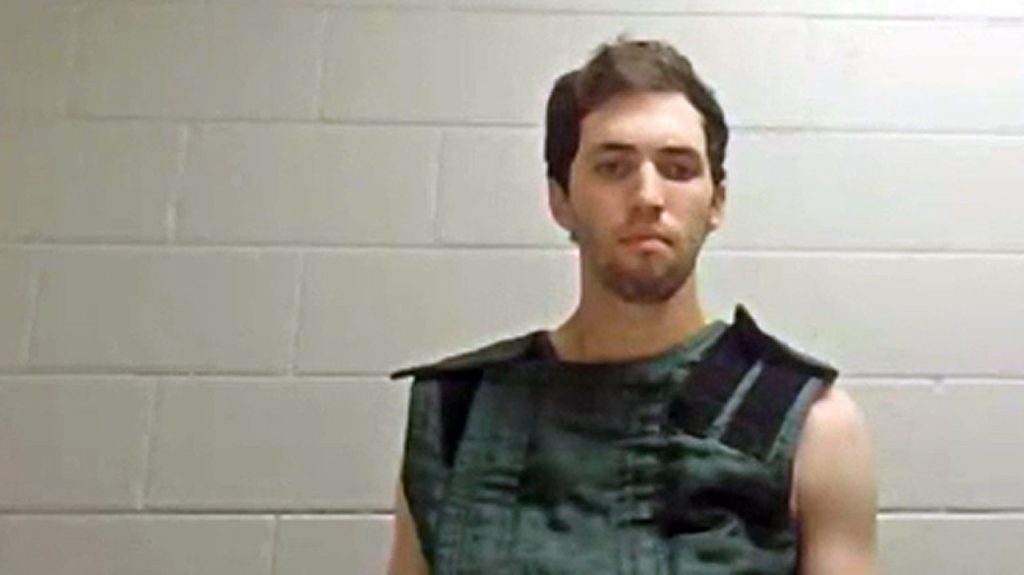Treatment of High-Profile Inmates: Insights on Tyler Robinson’s Detention
In the aftermath of Charlie Kirk’s tragic assassination, the custody of suspect Tyler Robinson has drawn attention to the specialized protocols high-profile inmates face while awaiting trial. According to Judi Garrett, a former assistant director of the Bureau of Prisons, treating such detainees differently isn’t merely procedural—it’s a critical safety requirement. “Somebody like the alleged Charlie Kirk assassin is in a very different circumstance than he has been in prior times in his life,” Garrett explained to Fox News. “Any custodian of someone like that would be remiss in not treating him very differently from most everyone else in their population.” This heightened security isn’t necessarily punitive but represents a carefully calculated approach to managing potential risks that accompany high-profile cases, especially those involving political violence. Robinson, currently held in Utah, faces charges including aggravated homicide for allegedly shooting the Turning Point USA founder during a campus event at Utah Valley University on September 10—a crime authorities have described as a targeted assassination.
The misconceptions surrounding what many call “solitary confinement” run deep, according to Garrett. Despite popular perception, inmates in restricted housing aren’t completely isolated from human contact. “These people are not isolated from other people, nor are they in a solitary environment,” she clarified. In reality, staff frequently enter cells to deliver meals, provide medical care, and offer other necessary services. For inmates like Robinson, this means an inverted daily routine where “everything flips” and services come to them rather than vice versa. Their movements become highly restricted and carefully monitored, with most spending approximately 23 hours daily within their cells. Any movement outside these confines—even for basic activities like showering—happens under strict supervision. This approach minimizes security risks while maintaining essential care standards. Though Robinson was initially seen wearing what officials called “suicide garb” during his first court appearance, authorities haven’t confirmed his current watch status. However, standard procedure for suicide watch involves visual checks every 15 minutes, illustrating the intensive resource commitment such housing arrangements demand.
The rationale behind restrictive housing extends beyond just managing dangerous inmates—it serves multiple essential functions within correctional facilities. Garrett emphasized that isolation can be implemented “either for their own protection or for the protection of others.” In high-profile cases like Robinson’s, separation might be necessary to protect the inmate from others who might target them, prevent self-harm attempts, or safeguard the broader facility population. Though conditions between disciplinary and protective isolation appear similar on the surface, the motivations differ significantly. For individuals charged with politically motivated violence, these precautions become even more crucial as they navigate the intense scrutiny and emotional responses their alleged actions have triggered. Despite these restrictions, Robinson maintains his constitutional rights—particularly regarding legal representation. “He is certainly allowed to communicate with his lawyer,” Garrett noted, though family communications are likely more limited because “the phone would need to be brought to him.” All non-attorney communications remain monitored, balancing security protocols with inmates’ rights to legal counsel.
The debate surrounding restrictive housing practices has intensified over the past decade, with reformers advocating for increased human contact while correctional officers emphasize safety imperatives. Garrett pointed to New York’s HALT statute, which limits solitary confinement duration, as an example of legislation creating tension with correctional staff who consider such tools essential for maintaining order. This friction highlights the complex balancing act between humane treatment and security concerns in correctional settings. For high-security or death row inmates like Robinson might become if convicted and sentenced to death, the stakes are particularly high—as Garrett noted, “those folks don’t have much to lose,” making strict protocols necessary to protect both staff and other inmates. Robinson’s case, carrying potential death penalty implications, places him under especially careful observation as authorities work to prevent any self-harm attempts or security breaches that could compromise the judicial process.
Despite these stringent measures, Garrett emphasized that humane treatment remains fundamental to correctional philosophy—not from misplaced sympathy, but practical necessity. “Most importantly, 96, 7, 8, 9 percent of them return to the community at some point,” she observed. “If you mistreat people in prison, they are going to mistreat someone else… So it’s to everyone’s benefit to operate institutions that are humane.” This perspective underscores a critical reality often overlooked in discussions about high-profile inmates: regardless of their alleged crimes, maintaining their dignity and basic rights serves broader societal interests. Even for those facing the most serious charges, like Robinson’s seven counts including aggravated homicide, the presumption of innocence legally persists until conviction. His treatment while detained must therefore balance security concerns with constitutional protections—a delicate equilibrium correctional facilities must maintain regardless of the heinous nature of alleged crimes or the public attention they generate.
Robinson’s case illustrates the extraordinary challenges correctional facilities face when housing defendants accused of politically charged violence. After his arrest in St. George following the shooting, authorities cited statements he allegedly made to parents, a romantic partner, and friends that either admitted to or implied involvement in Kirk’s killing. These circumstances have placed him at the center of intense scrutiny while awaiting trial proceedings where he has yet to enter a plea. The specialized housing protocols surrounding his detention reflect both the seriousness of his alleged crime and the realities of managing high-profile inmates in the contemporary correctional system. As his case moves through the judicial process, the balance between security, constitutional rights, and humane treatment will continue to be tested—highlighting the complex, often unseen mechanics of the American criminal justice system when confronted with cases that capture national attention. Whatever the outcome of his trial, Robinson’s pretrial detention offers a window into how correctional institutions manage the most sensitive cases while upholding their dual mandate of security and human dignity.


